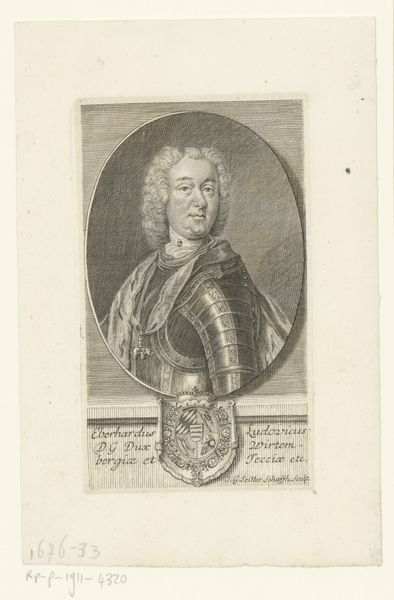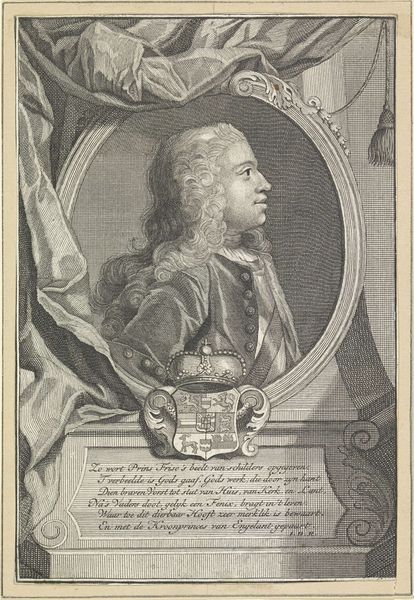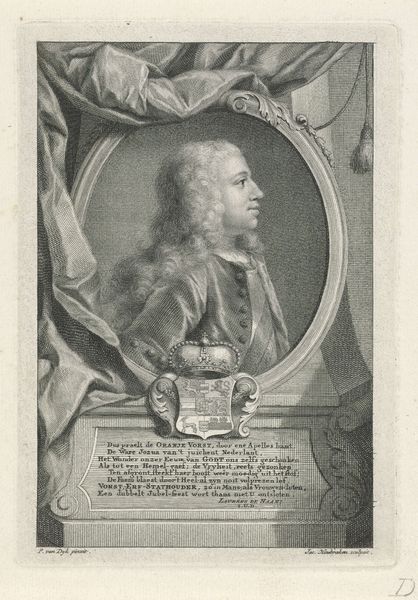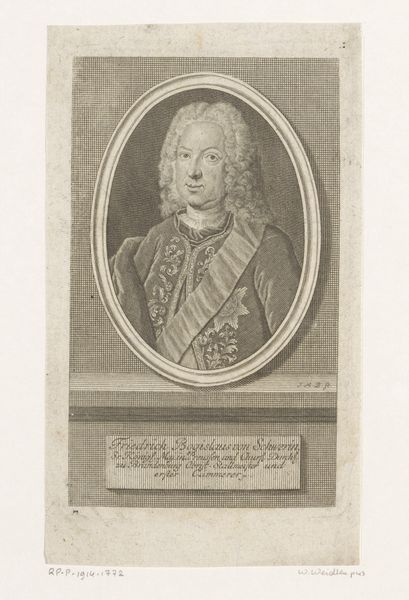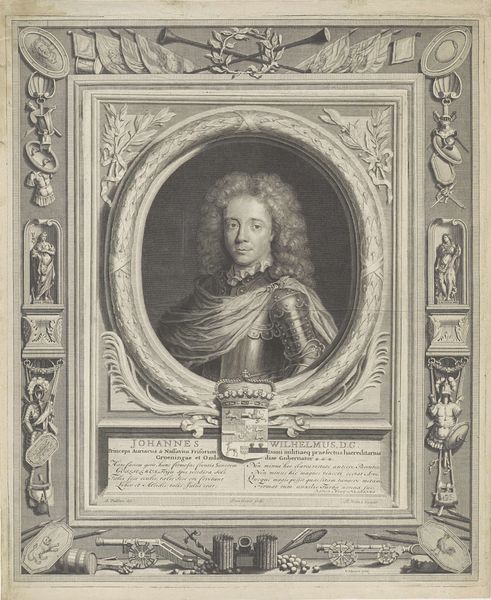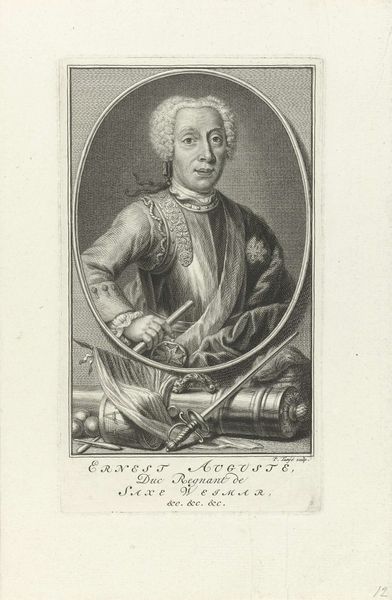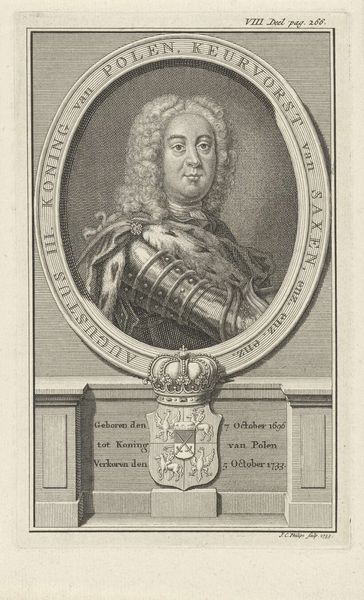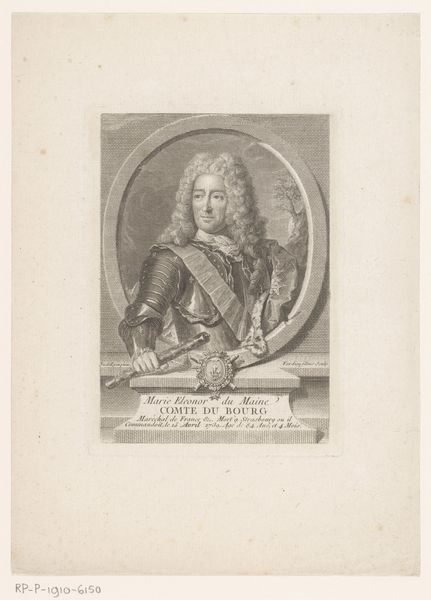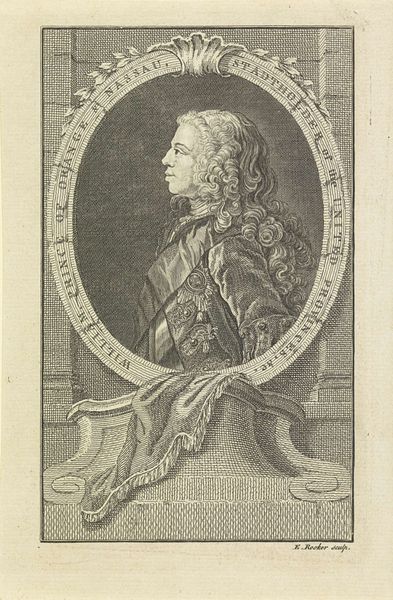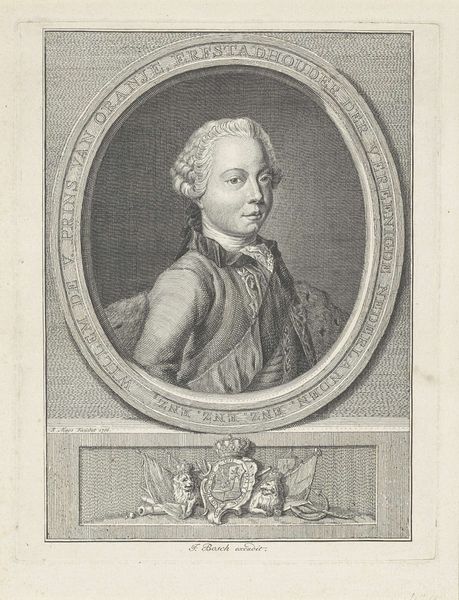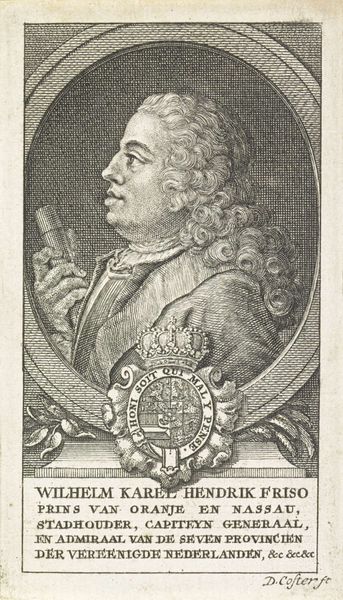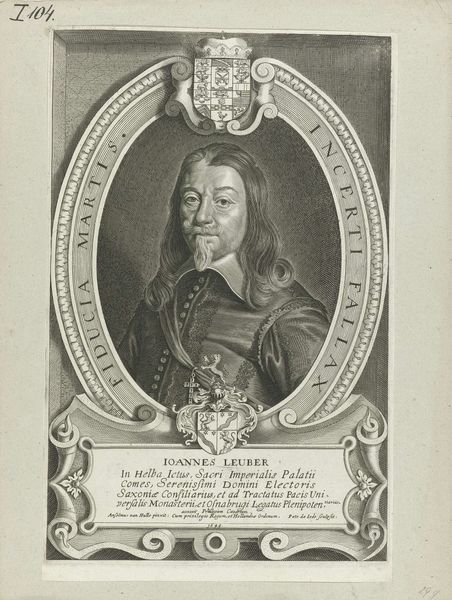
print, engraving
#
portrait
#
baroque
# print
#
history-painting
#
engraving
Dimensions: height 173 mm, width 123 mm
Copyright: Rijks Museum: Open Domain
This portrait of Willem IV, Prince of Orange-Nassau, was made as an engraving, a printmaking process involving carving lines into a metal plate. An anonymous artist created it. The technique is a highly skilled, labor-intensive process, demanding precision and control. Consider the material: ink, transferred onto paper. The sharp contrast achieved through engraving lends itself well to detailed, formal portraiture. The dense cross-hatching builds up tone, giving depth to the figure's face and wig. Engraving was not only a means of artistic expression but also a reproductive technology. Prints like these were relatively accessible, allowing for the widespread distribution of Willem IV's image. This connects directly to power and social standing, as the print served as a form of political communication, reinforcing his authority. Ultimately, appreciating this print means acknowledging the complex interplay between artistic skill, mechanical reproduction, and social context. It reminds us that even seemingly simple images can be deeply embedded in the economic and political realities of their time.
Comments
No comments
Be the first to comment and join the conversation on the ultimate creative platform.
